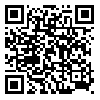1. Yamamoto T, Fujioka M, Katamura R, Yakabe A, Kimura H, Katagiri Y, Nagatomo H. Evaluation of nutrition in the healing of pressure ulcers: Are the EPIAP nutritional guidelines sufficient to heal wounds? Wounds 2009; 21: 153-157.
2. Kobayashi N, Nagai H, Yasuda Y, Kanazawa K. The early influence of albumin administration on protein metabolism and wound healing in burned rats. Wound Repair Regen. 2004;12: 109-114.
3. Lizaka S, Sanada H, Matsui Y, Furue M, Tachibana T, Nakayama T, Sugama J, Furuta K, Tachi M, Tokunaga K, Miyachi Y. Serum albumin level is a limited nutritional marker for predicting wound healing in patients with pressure ulcer: Two multicenter prospective cohort studies. Clin Nutr 2011; 30:738-745.
4. Sugino H, Hashimoto I, Tanaka Y, Ishida S, Abe Y, Nakanisi H. Relation between the serum albumin level and nutrition supply in patients with pressure ulcers: Retrospective study in an acute care setting. J Med Invest 2014; 61: 15-21.
5. Kumar TR, Grønlien KG, Tønnesen HH. Protein-Based Systems for Topical Antibacterial Therapy, Front Med Technol. 2021; 3: 685686. PMCID: PMC8757810
6. Meng R, Zhu H, Deng P, Li M, Ji Q, He H, Jin L, Wang B. Research progress on albumin-based hydrogels: Properties, preparation methods, types and its application for antitumor-drug delivery and tissue engineering, Front. Bioeng. Biotechnol, 2023; 11: 1137145. doi: 10.3389/fbioe.2023.1137145
7. Avizheh L, Peirouvi T, Diba K, Fathi-Azarbayjani A. Electrospun wound dressing as a promising tool for the therapeutic delivery of ascorbic acid and caffeine Ther Deliv. 2019;10(12):757-767.
8. Ascencio SM, Choe C, Meinke MC, Müller RH, Maksimov GV, Wigger-Alberti W, Lademann J, Darvin ME. Confocal Raman microscopy and multivariate statistical analysis for determination of different penetration abilities of caffeine and propylene glycol applied simultaneously in a mixture on porcine skin ex vivo. Eur J Pharm Biopharm. 2016; 104: 51-58.
9. Fathi-Azarbayjani A, Khu JV, Chan YW, Chan SY Development and characterization of skin permeation retardants and enhancers: A comparative study of levothyroxine-loaded PNIPAM, PLA, PLGA and EC microparticles. Biopharm Drug Dispos. 2011; 32: 380-388.
10. Li X, Zhou L, Fan R, Tong A, Yang M, Deng J, Zhang X, Guo G. In Situ gel-forming AP-57 Peptide delivery system for cutaneous wound healing. Int J Pharm. 2015; 495: 560–571.
11. Lowe A, Bills J, Verma R, Lavery L, Davis K, Jr Balkus KJ. Electrospun nitric oxide releasing bandage with enhanced wound healing’. Acta Biomater. 2015; 13: 121–130.
12. Zhang C-Z, Niu J, Chong Y-S, Huang YF, Chu Y, Xie SY, Jiang ZH, Peng LH. Porous microspheres as promising vehicles for the topical delivery of poorly soluble asiaticoside accelerate wound healing and inhibit scar formation in vitro & in vivo. Eur J Pharm Biopharm. 2016; 109: 1-13.
13. Tavagnacco L, Engström O, Schnup U, Saboungi ML, Himmel M, Widmalm G, Cesӑro A, Brady JW. Caffeine and sugars interact in aqueous solutions: A simulation and NMR Study. J Phys ChemB. 2012; 116: 11701-11711.
14. Abutaleb A, Lolla D, Aljuhani A, Shin HU, Rajala JW, Chase GG. Effects of surfactants on the morphology and properties of electrospun polyetherimide fibers. Fibers. 2017; 5: 33.
15. Grdadolnik J, Maréchal Y. Bovine serum albumin observed by infrared spectrometry. I. methodology, structural investigation, and water uptake. Biopolymers (Biospectroscopy). 2001; 62: 40–53.
16. Lazarevic A, Pokrajac D, Marcano A, Melikechi N. Support vector machine based classification of fast Fourier transform spectroscopy of proteins. Proceedings of SPIE - The International Society for Optical Engineering. 2009.
17. Li X, Kanjwal MA, Lin L, Chronakis IS. Electrospun polyvinyl-alcohol nanofibers as oral fast-dissolving delivery system of caffeine and riboflavin. Colloids Surf B Biointerfaces. 2013; 103: 182–188.
18. Illangakoon UE, Gill H, Shearman GC, Parhizkar M, Mahalingam S, Chatterton NP, Williams GR Fast dissolving paracetamol/caffeine nanofibers prepared by electrospinning. Int J Pharm 2014; 477: 369–379.
19. Ninan N, Muthiah M, Yahaya Bt NA, Park I-K, Elain A, Wong TW, Grohens TS. Antibacterial and wound healing analysis of gelatin/zeolite scaffolds. Colloids Surf B Biointerfaces. 2014;115: 244-252.
20. Ojeh N, Stojadinovic O, Pastar I, Sawaya A, Yin N, Tomic-Canic M. The effects of caffeine on wound healing’. Int Wound J. 2016; 13: 605-13.
21. Mistrík E, Dusilová –Sulková S, Bláha V, Sobotka L. Plasma albumin levels correlate with decreased microcirculation and the development of skin defects in hemodialyzed patients. Nutrition 2010; 26: 880-885.






